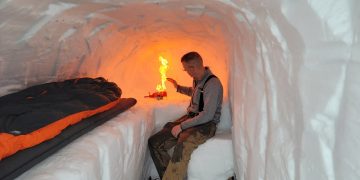In a world dominated by technology, it’s easy to forget that there was once a time when communication wasn’t instant. In the face of emergency situations—whether you’re lost in the wilderness, stranded in a remote location, or facing some other form of distress—the ability to signal for help without the aid of electronics is not just a useful skill; it could be a life-saving one. This article delves into the various methods and techniques to signal for assistance when electronic devices fail, focusing on both traditional and creative means of catching attention in dire situations.
1. The Basics of Signaling for Help
Before diving into specific techniques, it’s important to consider the fundamentals of signaling for help. Whether you’re using sound, light, or visual signals, the goal is the same: to make yourself noticeable to others, especially when you’re in an environment where rescue teams are not immediately aware of your presence.
The key factors that determine the effectiveness of a signal include:
- Visibility: Can people see your signal from a distance? High-contrast colors, large surface areas, and movement are critical in catching attention.
- Audibility: Is the sound you’re making loud enough to be heard over the ambient noise of the environment? For example, in a forest, wind and rain may drown out your signals.
- Durability: Can your signal withstand the elements for an extended period, particularly in extreme weather?
With these factors in mind, let’s explore various methods of signaling.
2. Visual Signals
Visual signals rely on sight, whether it’s through bright colors, reflective materials, or physical movements. Here are some of the most effective visual signals:
A. Smoke and Fire
Fire is a traditional signal for help, and for a good reason. A fire not only provides warmth and light but can also be seen from long distances, especially at night. To create a large, noticeable smoke plume during the day, burn green vegetation, such as leaves or wet wood, to produce thick, white smoke.
- Three Fires: One of the most recognized signals is lighting three fires in a triangle shape. This pattern is universally understood as a distress signal, as the number three has been traditionally associated with emergencies.
B. SOS with a Mirror
A signal mirror is a powerful tool for attracting attention in the wilderness. The reflection of sunlight off the mirror can be seen over vast distances, even several miles away, depending on the clarity of the sky and the height of your vantage point. The classic SOS distress signal—three short flashes, three long flashes, and three short flashes again—can be flashed using the mirror.
- Tip: Use a steady hand and aim the reflection at a potential rescuer. The mirror will amplify your signal, and a quick flash could be all that’s needed.

C. Bright Cloth or Fabric
If you don’t have a mirror, you can still create a highly visible signal by using brightly colored clothing, a tarp, or any fabric that stands out against the natural surroundings. The contrast between a bright color like red, orange, or yellow and the earthy tones of nature makes the signal hard to miss. You can use the fabric in the following ways:
- Waving the fabric in the air to attract attention.
- Laying the fabric out in an open area so that it can be seen from above, particularly if a rescue helicopter or plane is flying overhead.
- Making large signs on the ground, like “HELP” or “SOS,” to increase the chances of being noticed.
D. Light Signals
At night or in low-visibility conditions, light signals are an excellent alternative. You can use a flashlight, headlamp, or even a fire to create a bright beam that can be seen from miles away. A simple pattern of light flashes—three short flashes, then a long one—can communicate distress.
- Tip: Make sure the light is directed toward potential rescuers, whether that’s a passing plane, someone on a distant hill, or a search party on the ground.
3. Auditory Signals
Sound is another powerful way to communicate in an emergency. When you’re in a remote location, loud noises—especially if they are rhythmic or repeated—are likely to grab someone’s attention. Here are several auditory signals you can use to call for help:
A. Whistle
A whistle is a small, portable tool that packs a big punch when it comes to signaling. Its high-pitched sound can be heard over long distances, cutting through wind, rain, or the noise of dense forests. In most wilderness survival kits, a whistle is included for its utility in signaling.
- Tip: The universal distress signal for a whistle is three short blasts. This pattern is internationally recognized as a call for help.
B. Shouting or Yelling
In some cases, if you’re close to potential rescuers, shouting may be an effective way to get attention. However, shouting is only effective if you’re within earshot of someone who can help. It’s important to preserve your voice and energy for moments when you’re most likely to be heard.
- Tip: Yell in short bursts to avoid straining your vocal cords. Make your voice loud and clear, but avoid overexertion.
C. Bang or Strike Objects Together
In environments like forests or caves, you can create loud, resonating noises by banging rocks, sticks, or any other hard objects together. A large, hollow object—like a metal pot or a large tin—can also produce a loud, echoing sound that travels far.
- Tip: A sequence of three strikes is a recognized distress signal. The rhythm is what matters most, so make sure your strikes are intentional and consistent.
D. Air Horns
While technically an electronic device, air horns have a mechanical function and can be used without electricity. They’re extremely loud and can be heard over large distances, especially in open spaces or on the water. If you’re stranded on a boat or in a remote wilderness, carrying an air horn can significantly increase your chances of being heard.
4. Physical Movement and Actions
Sometimes, the key to signaling for help lies in your movements. In certain situations, constant motion can catch the eye of potential rescuers, especially if they are flying overhead or traveling at a distance.
A. Waving Your Arms
Waving your arms in a large, exaggerated motion is an obvious way to draw attention to yourself. Whether you’re on the ground or atop a ridge, large arm gestures are easier to spot than subtle movements.

- Tip: When waving, make sure to do it in a continuous, steady manner to make your signal clear. Avoid waving too quickly, as it may be mistaken for a casual motion.
B. Use of Mirrors or Reflective Surfaces
As mentioned earlier, using mirrors can signal for help in remote areas. If you don’t have a mirror, you can use any shiny surface—like a polished metal object, a glass bottle, or even a water bottle—to reflect sunlight toward potential rescuers.
C. Spelling Out Messages
When you’re in a place where others might spot you from the air or a distance, creating large symbols or messages on the ground can be a powerful way to send a distress signal. The classic “HELP” or “SOS” messages, made with rocks, logs, or snow, can make all the difference when someone is scanning the area from above.
- Tip: The bigger and clearer your message, the more likely it will be seen. If you’re in an open area, don’t be afraid to create a large-scale message with whatever materials you have at hand.
5. The Role of Rescue Teams
While signaling is crucial, it’s also important to understand the role of rescue teams and search protocols. In most cases, the goal is to make your signal as noticeable as possible so that it reaches someone who can help you—whether it’s a helicopter crew, searchers on foot, or passing travelers.
- Keep calm and stay put: Once you’ve made a signal, resist the urge to move too much. Rescue teams will search for you at a specific location, and excessive movement can complicate their efforts.
- Use a combination of signals: The more signals you use, the higher your chances of being noticed. For example, you could light a fire and wave a bright piece of cloth while blowing a whistle.
6. Conclusion
In an emergency situation, being able to signal for help without electronics is an essential skill that could make the difference between life and death. The methods outlined above—whether through visual cues like smoke and mirrors, auditory signals like whistles, or physical actions like waving—are all effective ways to attract attention. While these techniques are simple, they rely on your knowledge of your environment and your ability to stay calm under pressure.
In the end, the best way to prepare for an emergency is to practice these skills before you need them. Carry essential signaling tools like mirrors, whistles, and brightly colored fabrics, and learn the basics of fire-making and sound signaling. By taking these steps, you increase your chances of being rescued when it matters most.























